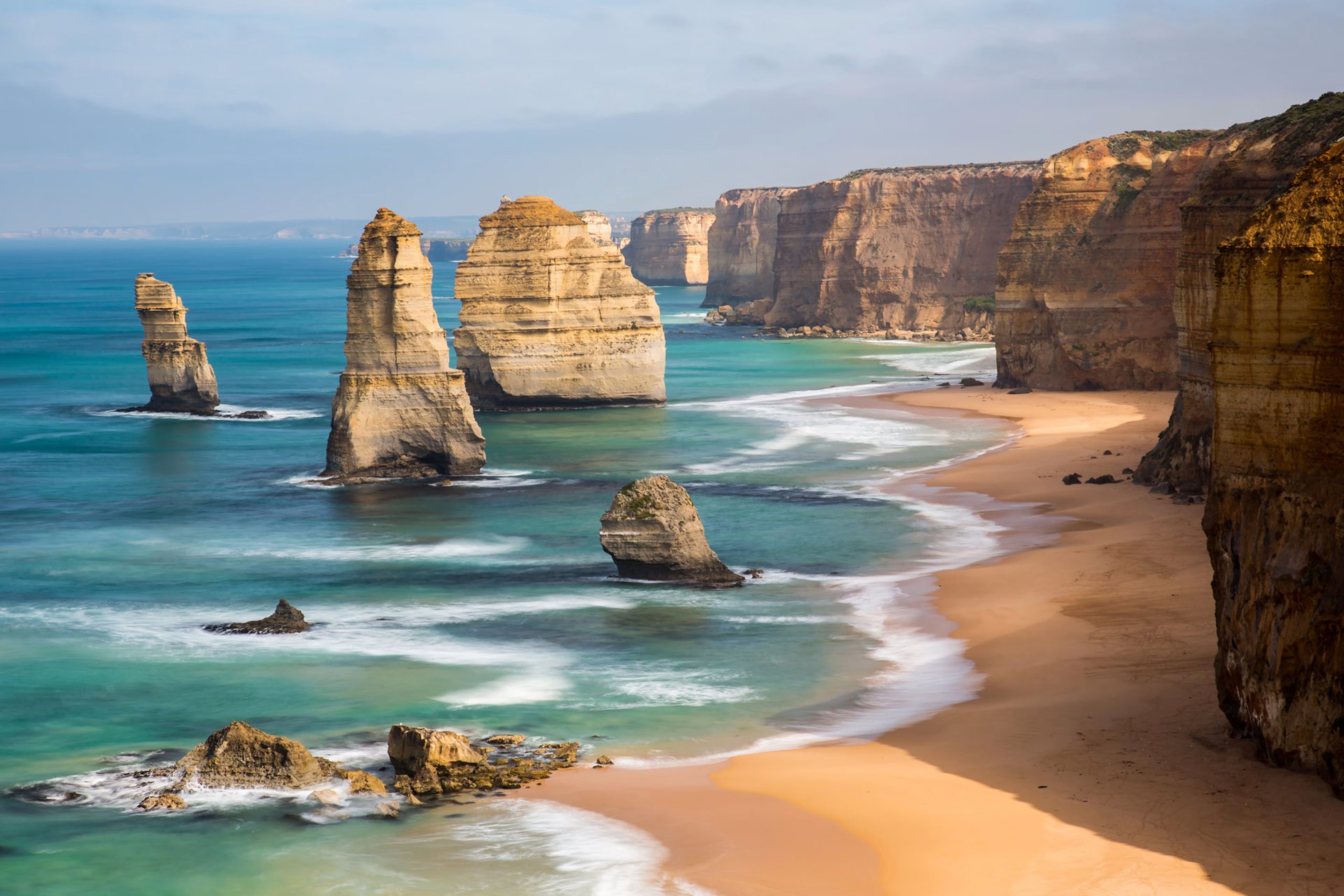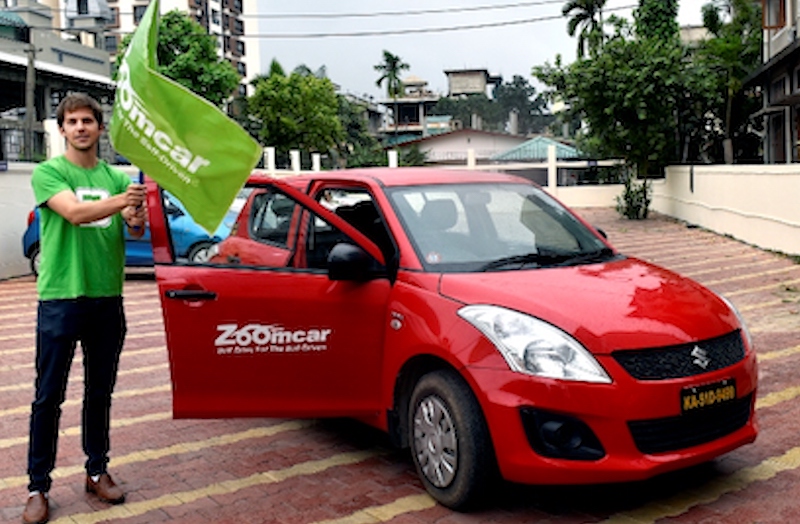The Great Ocean Road Australia is more than just a scenic route—it’s a breathtaking journey along one of the most dramatic coastlines in the world. Stretching 243 kilometers along the southeastern coast of Victoria, this legendary road was carved into the cliffs by returned World War I soldiers between 1919 and 1932. Today, it stands as the world’s largest war memorial and one of Australia’s top travel experiences.
Beginning in Torquay and winding its way to Allansford, this coastal drive reveals a new scene at every turn—limestone cliffs, dense rainforests, sandy beaches, and unique rock formations like the world-famous Twelve Apostles. Whether you’re traveling for adventure, photography, nature, or relaxation, the Great Ocean Road has something for every kind of explorer. With cozy seaside towns, national parks, and thrilling lookouts, it offers the perfect blend of nature and culture for a road trip you’ll never forget.
Twelve Apostles: Australia’s Most Iconic Coastline
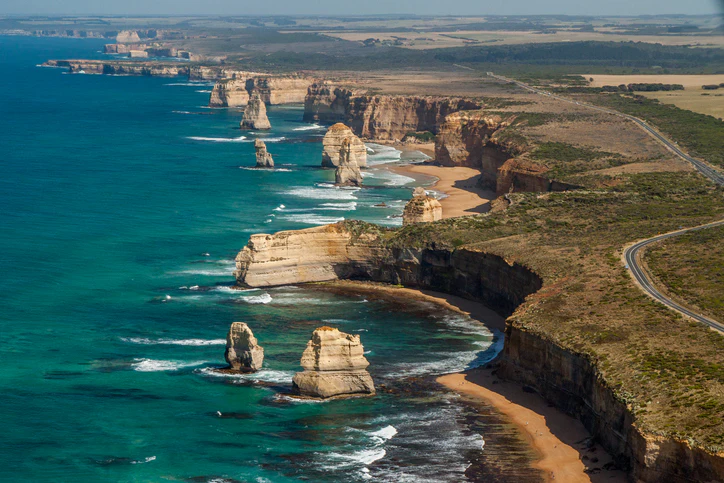
The Twelve Apostles are the crown jewel of the Great Ocean Road. Located near Port Campbell, these towering limestone stacks rise dramatically from the Southern Ocean. Formed by millions of years of erosion, these natural giants are remnants of the ancient coastline. Originally there were twelve, but time and tides have left only eight standing—still, they are as awe-inspiring as ever.
Visitors can enjoy panoramic views from the clifftop boardwalks or take the Gibson Steps down to the beach for a close-up perspective. Sunrise and sunset are magical times to visit, as golden light paints the cliffs and sea in warm hues. For an even more unforgettable experience, book a helicopter tour to witness this geological wonder from the air.
Nearby attractions such as Loch Ard Gorge and The Razorback make this section of the drive a must-stop destination. Whether you’re a photographer or simply a nature lover, the Twelve Apostles will leave you speechless.
Loch Ard Gorge: Nature’s Drama and Maritime History
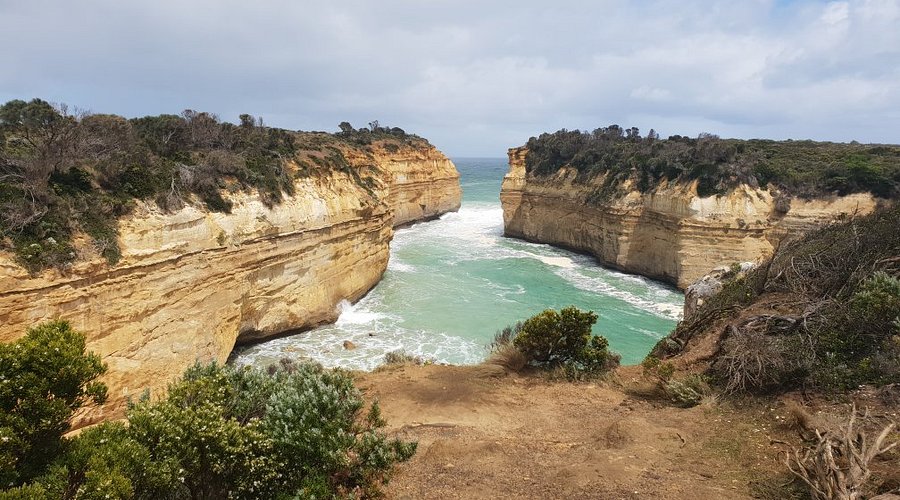
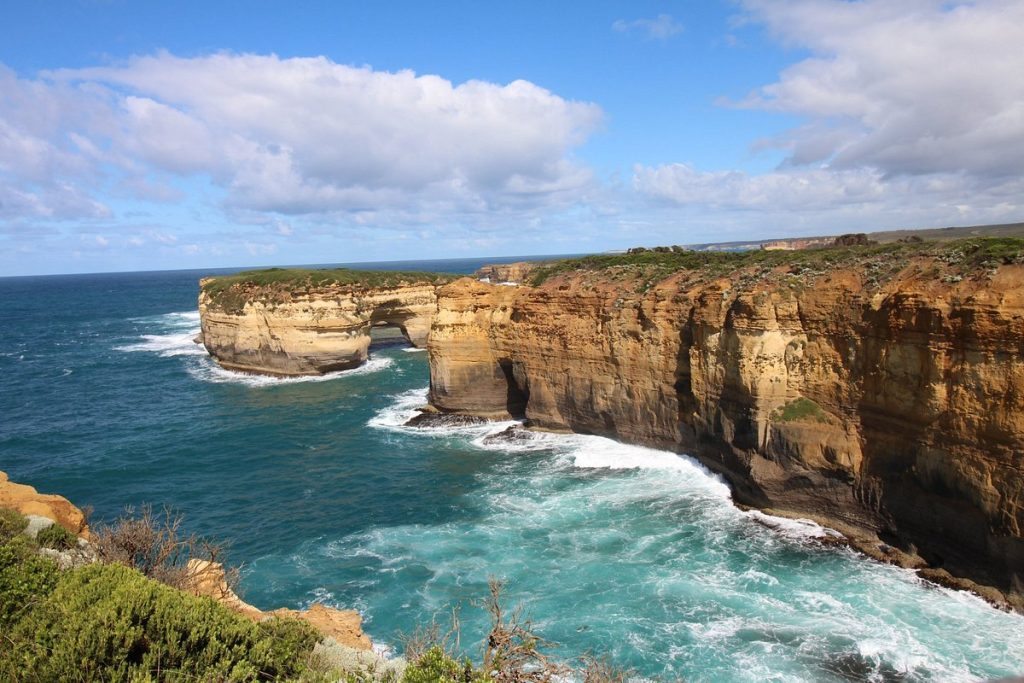
Just a few minutes’ drive from the Twelve Apostles lies Loch Ard Gorge, a stunning natural amphitheater carved into the limestone cliffs. This site is not just known for its beauty—it holds a tragic maritime tale that adds depth to your visit. In 1878, the ship Loch Ard wrecked nearby, killing 52 people and leaving only two survivors: Tom Pearce and Eva Carmichael. Their story of survival is commemorated at the site through signage and lookouts.
The gorge features dramatic cliffs, a sandy beach, and turquoise waters—ideal for walking, photography, and reflecting on the history beneath your feet. Trails lead to other formations such as Thunder Cave, The Arch, and Mutton Bird Island. You’ll also find native flora, stunning ocean views, and plenty of photo opportunities.
Loch Ard Gorge captures both the power and the serenity of the Australian coastline, making it one of the most meaningful and memorable stops on the Great Ocean Road.
Great Otway National Park: Rainforests, Waterfalls, and Wildlife
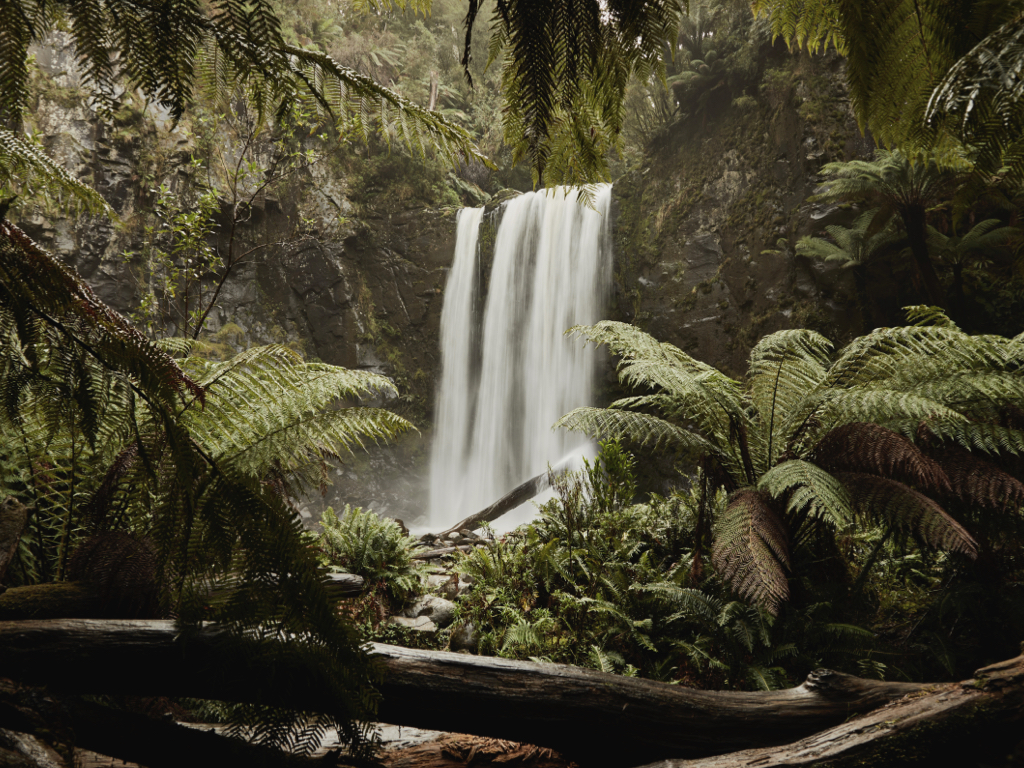
As the coastal road winds inland, you’ll find yourself entering the lush green world of Great Otway National Park. Covering over 100,000 hectares, the Otways are a striking contrast to the sea cliffs—filled with ancient eucalyptus trees, tree ferns, mossy paths, and cascading waterfalls.
Top spots include Hopetoun Falls, Triplet Falls, and the Otway Fly Treetop Walk—a steel canopy trail suspended 25 meters above the forest floor. Hiking trails range from short walks to longer treks for more adventurous travelers. The air here is cool and fresh, a refreshing break from the windy coastlines.
Wildlife enthusiasts will be thrilled by the chance to spot koalas, kangaroos, and over 100 bird species. The park also features picnic areas, campgrounds, and lookout points that offer sweeping forest views. Whether you’re stopping for a few hours or spending the night in a cabin, the Great Otway National Park adds a forest fairytale element to your road trip.
Seaside Towns: Lorne and Apollo Bay
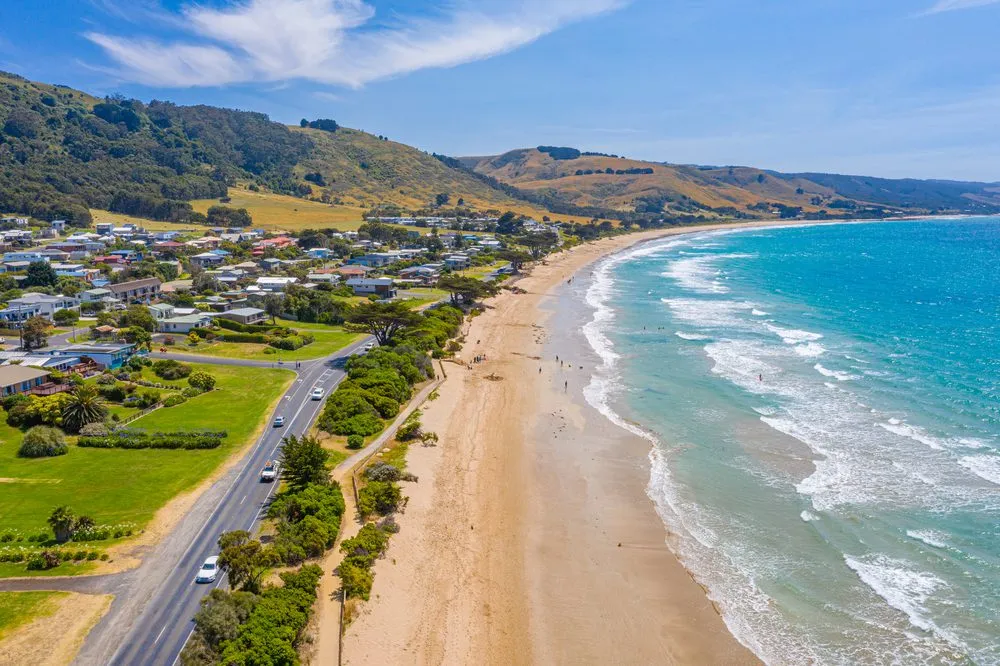
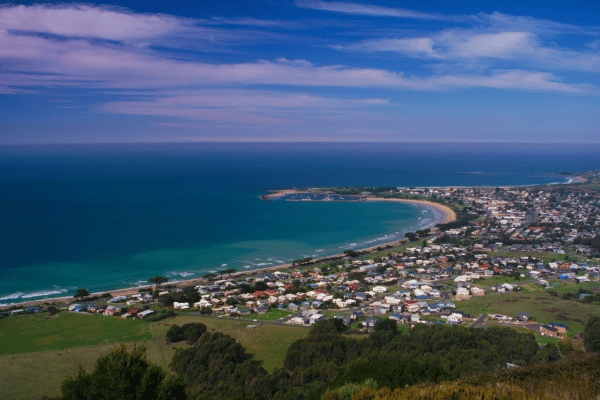
Among the many stops along the Great Ocean Road, Lorne and Apollo Bay stand out as charming, must-visit seaside towns that blend comfort with coastal beauty.
Lorne, located about two hours from Melbourne, is known for its artsy vibe, surf culture, and beautiful beaches. The town is a hub for cafes, boutique shops, and galleries. Nature lovers can visit Erskine Falls, located nearby, or explore trails through the surrounding forests. Lorne is also a popular stop for festivals and local events throughout the year.
Further along the coast is Apollo Bay, a peaceful town nestled between the ocean and the Otway Ranges. It’s perfect for relaxing, enjoying fresh seafood, or taking a walk along the pier. The nearby Marriners Lookout offers spectacular sunrise views, while the town itself serves as a great base for exploring the Otways.
Both towns offer a range of accommodations, from campsites and hostels to oceanfront resorts—ideal for an overnight stay or a few days of exploration.
Bells Beach and Torquay: Surf Culture and Coastal Vibes
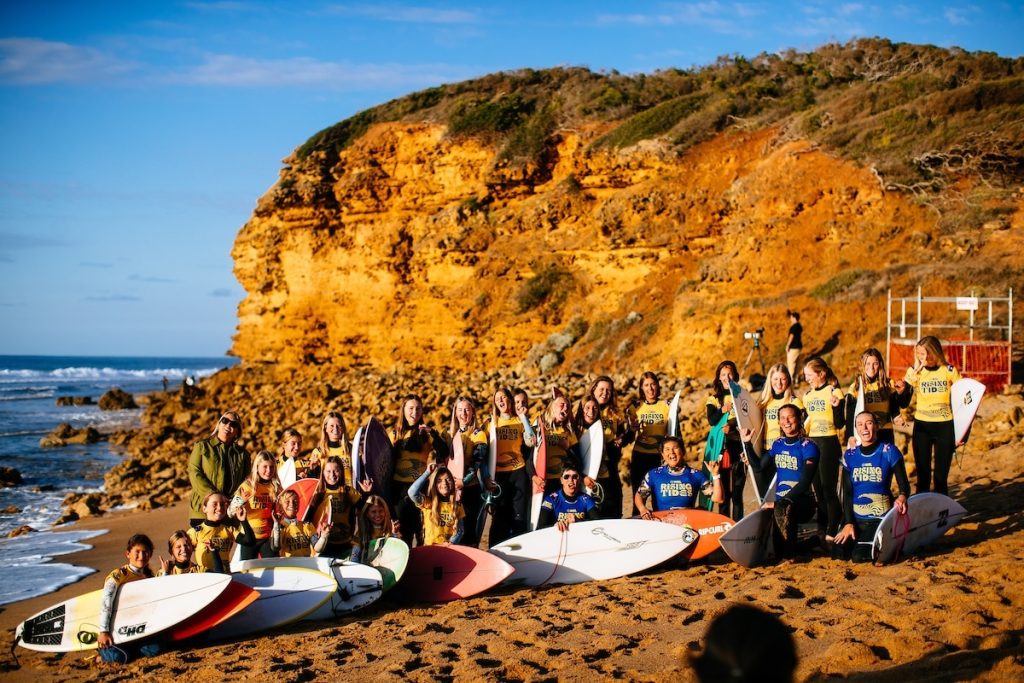
At the eastern gateway of the Great Ocean Road lies Torquay, Australia’s surfing capital and the birthplace of iconic surf brands like Rip Curl and Quiksilver. Just a few kilometers from Torquay is Bells Beach, one of the most famous surf spots in the world. Its powerful waves and steep cliffs make it a thrilling place to watch surfers or join the action if you’re experienced.
Bells Beach hosts the Rip Curl Pro, the world’s longest-running surf competition, attracting the best surfers from around the globe. Even if you’re not a surfer, the cliffs around the beach offer some of the most scenic viewpoints of the rugged Victorian coast.
The Australian National Surfing Museum, located in Torquay, provides a fascinating look at surf history, art, and culture. Combined with lively cafes, beach shops, and coastal walks, Torquay and Bells Beach set the perfect tone for the start—or end—of your Great Ocean Road journey.
Essential Tips for Driving the Great Ocean Road
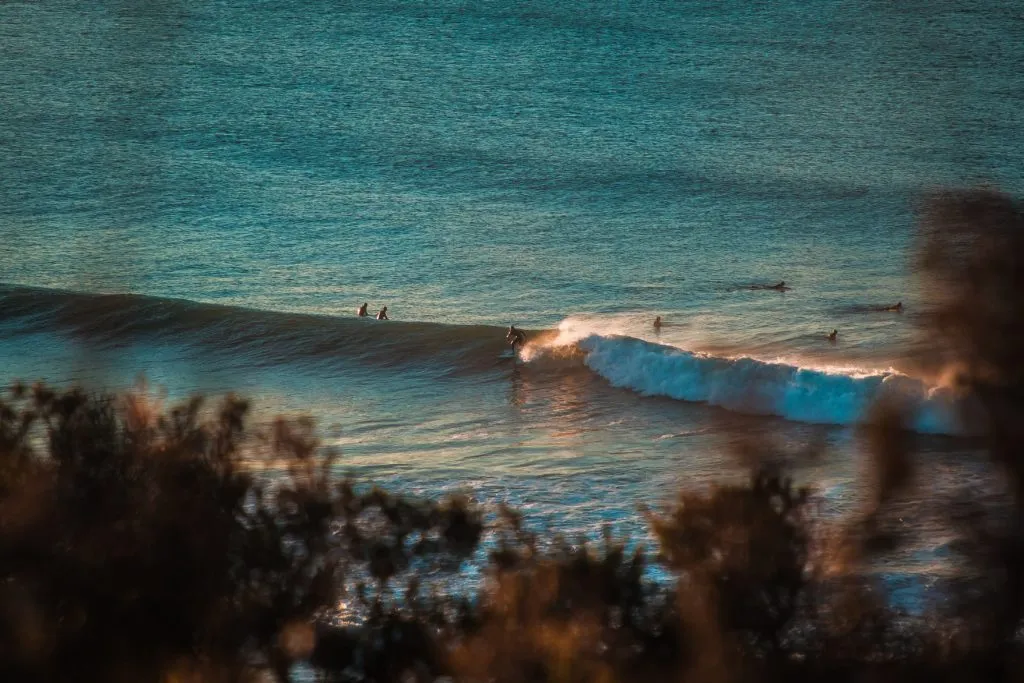
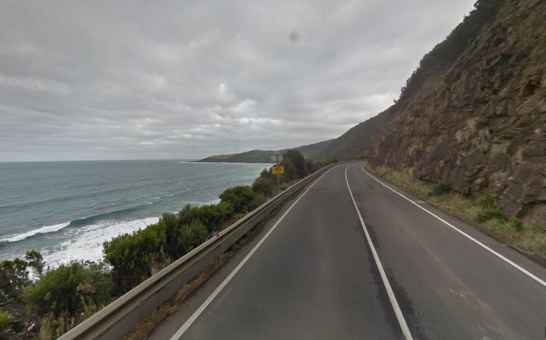
Planning a drive along the Great Ocean Road Australia requires some practical knowledge to make the most of your trip. First, it’s important to note that Australia drives on the left, and the road includes many bends and narrow stretches, especially near cliffs.
Key travel tips:
- Allow 2–3 days for a relaxed trip with time to explore attractions.
- Rent a car or campervan for flexibility; manual transmission is common.
- Fuel up in major towns like Torquay, Lorne, or Apollo Bay.
- Bring offline maps—cell service can drop in remote areas.
- Book accommodation ahead of time, especially in peak season.
- Pack layered clothing for changing weather, walking shoes, and snacks.
The best time to visit is spring (September–November) and autumn (March–May) when the weather is mild, and tourist crowds are smaller. Always check for road closures or conditions, especially in winter months when landslides can occur. And most importantly—don’t rush. Take your time to stop, explore, and enjoy the journey.
Conclusion: A Road Trip You’ll Remember Forever
Driving the Great Ocean Road Australia is one of the most rewarding travel experiences in the country. From the towering Twelve Apostles and shipwreck history to lush rainforests, wildlife encounters, and beachside towns, this coastal drive offers a perfect mix of adventure, scenery, and cultural charm.
Whether you’re a nature photographer, a family on holiday, or a solo explorer, every turn on this route offers something new to admire. With well-preserved parks, fascinating stories, and panoramic lookouts, this road truly showcases the diverse beauty of Australia.
So fuel up, plan your stops, and hit the road—because the Great Ocean Road isn’t just a destination. It’s a journey that will stay with you for a lifetime.

